Overly optimistic investor expectations of market returns could also be an issue. To wit:
“Whereas customers will not be very assured concerning the economic system, they’re extremely optimistic concerning the inventory market. In that very same shopper confidence report from the Convention Board, the expectations for rising inventory costs over the following 12 months are close to the best on document.“
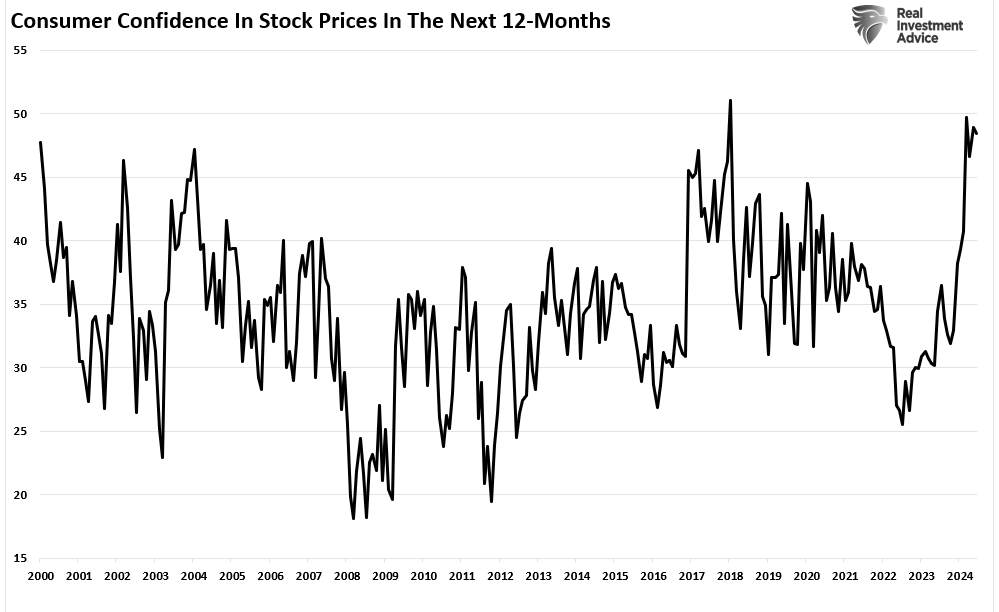
In fact, after a decade of 12% returns, why ought to they not be optimistic that the longer term might be a lot the identical because the previous? A very good instance got here from a current dialogue with a person wanting me to assessment the “monetary plan” for his or her retirement objectives. The plan was generated by one of many many “off the shelf” software program packages that take all of the inputs of revenue, property, pensions, social safety, and so forth., after which spits out assumptions of future asset values and drawdowns in retirement.
The issue is that the return assumptions had been grossly flawed.
Within the overwhelming majority of those plans, the optimistic assumption is that people could have a price of return of someplace between 6-10% yearly heading into retirement and 4-8% thereafter. The primary main flaw within the plan is the “compounding” of annual returns over time, which does NOT occur.
“There’s a large distinction between AVERAGE and ACTUAL returns on invested capital. Thus, in any given yr, the impression of losses destroys the annualized “compounding” impact of cash.
The chart beneath reveals the distinction between “precise” funding returns and “common” returns over time. See the issue? The purple-shaded space and the market worth graph present “common” returns of seven% yearly. Nevertheless, the return hole in “precise returns,” attributable to durations of capital destruction, is sort of important.”
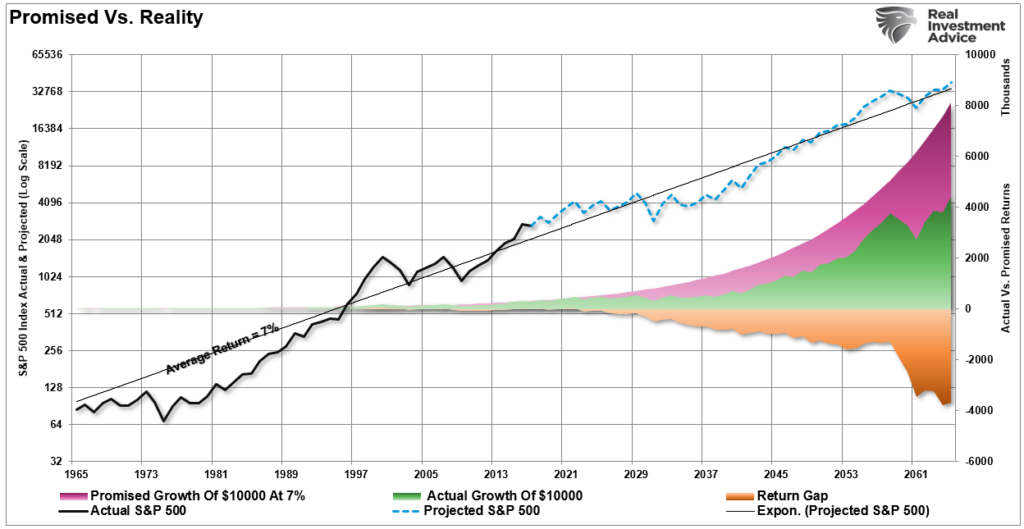

The second and most essential is the longer term expectation of particular person returns over the following 10-20 years.
This second level is what I need to deal with at the moment.
There are two major explanation why returns over the following decade or two are presently overestimated. The primary is a “you drawback,” and the second is “math.”


It’s A You Drawback
Again in 2016, I wrote an article discussing a Dalbar investor examine explaining why traders constantly “suck” at investing. As I detailed in that article, one of many largest impediments to attaining long-term funding returns is the impression of emotionally pushed funding errors.
Investor psychology helps us to know the ideas and actions that result in poor decision-making. That psychology drives the “purchase excessive/promote low” syndrome and the traps, triggers, and misconceptions that result in irrational errors that scale back returns over time.
Because the Dalbar examine confirmed, 9 distinct behaviors impede optimistic traders based mostly on their private experiences and distinctive personalities.
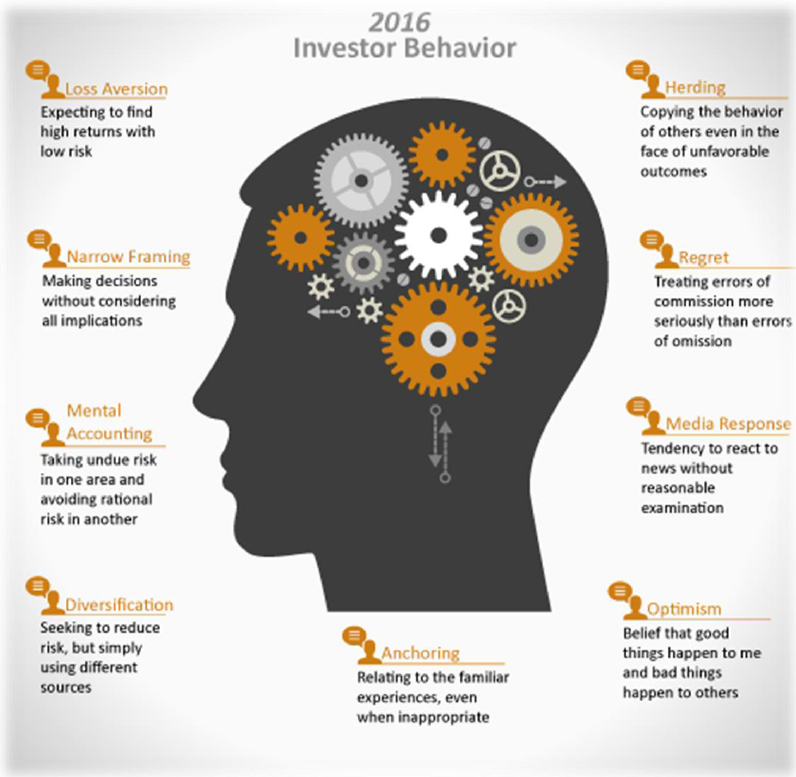

Essentially the most important issues for people are the “herding impact” and “loss aversion.”
These two behaviors are likely to operate collectively compounding the problems of investor errors over time. As markets are rising, people are optimistic the present worth development will proceed to final for an indefinite interval. The longer the rising development final, the extra ingrained that optimistic perception turns into till the final of “holdouts” lastly “buys in” because the monetary markets evolve right into a “euphoric state.”
Because the markets decline, there’s a gradual realization that “this decline” is one thing greater than a “purchase the dip”alternative. As losses mount, the nervousness of loss begins to mount till people search to “avert additional loss” by promoting.
As proven within the chart beneath, this behavioral development runs counter-intuitive to the “purchase low/promote excessive” funding rule.”
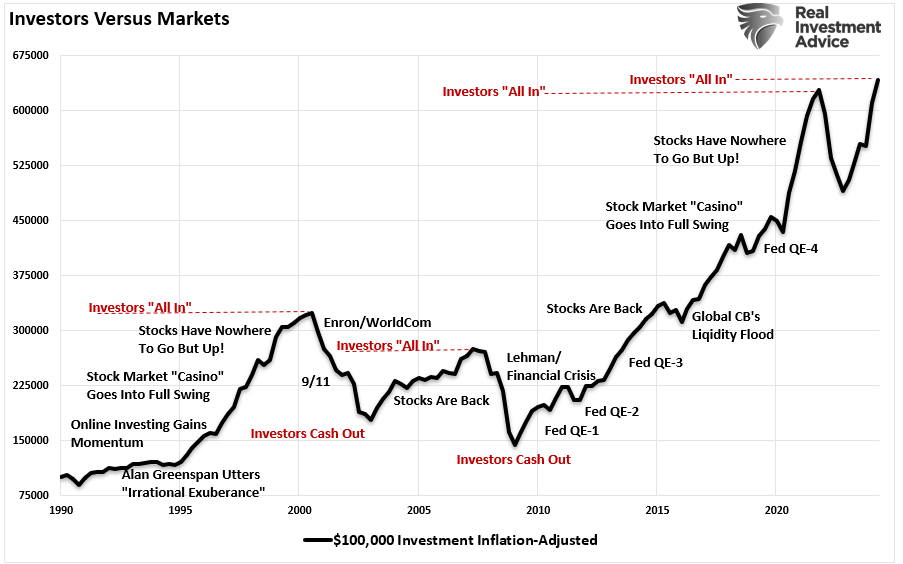

“Ultimately, we’re simply human. Regardless of one of the best of our intentions, it’s practically not possible for a person to be devoid of the emotional biases that inevitably result in poor funding decision-making over time. This is the reason all nice traders have strict funding disciplines that they comply with to cut back the impression of human feelings.
Extra importantly, regardless of research that present that “purchase and maintain,” and “passive indexing” methods, do certainly work over very lengthy durations of time; the truth is that few will ever survive the downturns with the intention to see the advantages.”
The impression of those emotionally pushed errors results in long-term underperformance beneath these “goal-based” monetary projections.
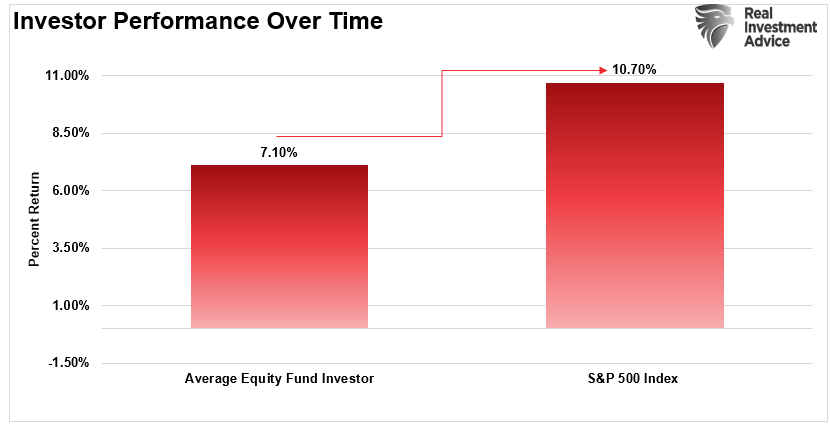

It’s Simply Math
“However Lance, the markets has returned 10% on common over the past century, so I’ll most likely be okay.”
True. When you can contract “vampirism,” keep away from daylight, garlic, and crosses, you may reside lengthy sufficient to realize the “common annual price of return” over the past 124 years.
For the remainder of us mere mortals, and why “period matching” is essential, we solely have between at the moment and retirement to achieve our objectives. For almost all of us – that’s about 15 years.
And therein lies the issue.
Regardless of a lot of the commentary that continues to counsel we’re in a long-term secular bull market, the mathematics suggests one thing considerably completely different. Nevertheless, it’s important to know that when low future charges of return are mentioned, it doesn’t imply that every yr might be low, however the return for your complete interval might be low.
The charts beneath present the 10- and 20-year rolling REAL, inflation-adjusted returns for the markets in comparison with trailing valuations.
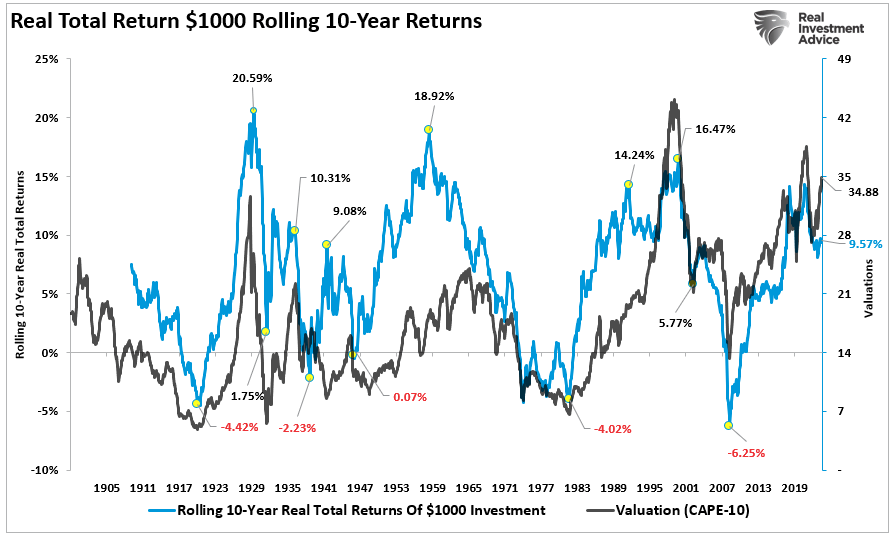

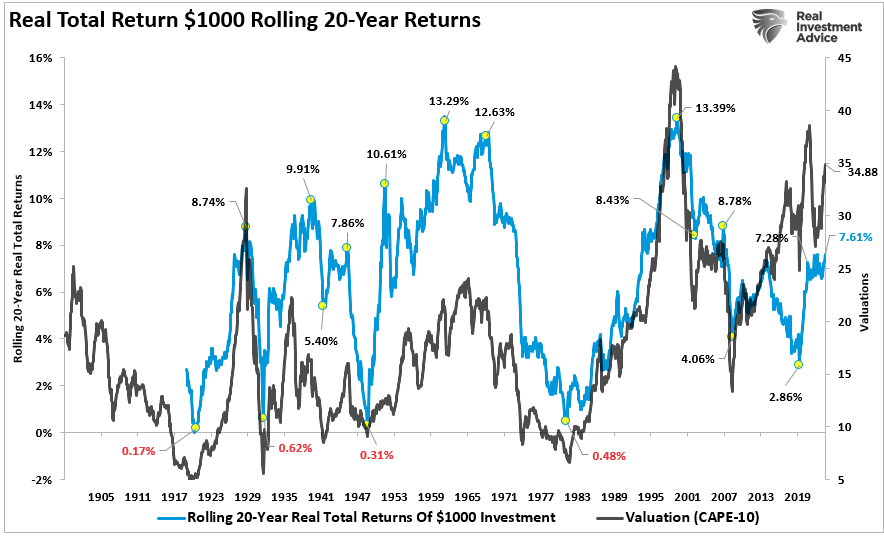

(Necessary be aware: Many advisors/analysts typically pen that the market has by no means had a ten or 20-year adverse return. That’s solely nominal and ought to be disregarded as inflation should be included within the debate.)
There are two essential factors to remove from the info. First, there are a number of durations all through historical past the place market returns had been close to zero and adverse. Secondly, the durations of low returns comply with durations of extreme market valuations. Such means that betting “This time will not be completely different” could not work properly.
As David Leonhardt famous beforehand:
“The traditional 1934 textbook ‘Safety Evaluation’ – by Benjamin Graham, a mentor to Warren Buffett, and David Dodd – urged traders to match inventory costs to earnings over ‘not lower than 5 years, ideally seven or ten years.’ Ten years is sufficient time for the economic system to go out and in of recession. It’s sufficient time for faddish theories about new paradigms to come back and go.”
Historical past reveals that valuations above 23x earnings have tended to indicate secular bull market peaks. Conversely, valuations at 7x earnings or much less have tended to indicate secular bull market beginning factors.
This level is confirmed just by trying on the distribution of returns as in comparison with valuations over time.
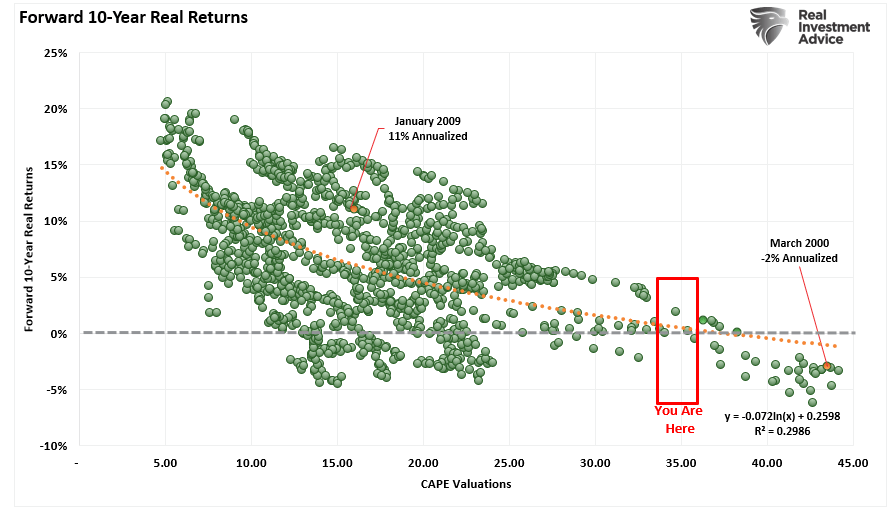

From present ranges, historical past means that returns to traders over the following 10 and 20 years will probably be decrease than larger. Nevertheless, as I stated, we are able to additionally show this mathematically. As I mentioned in “Rising Bullishness:”
“Capital good points from markets are primarily a operate of market capitalization, nominal financial development, plus dividend yield. Utilizing John Hussman’s components, we are able to mathematically calculate returns over the following 10-year interval as follows:
(1+nominal GDP development)*(regular market cap to GDP ratio / precise market cap to GDP ratio)^(1/10)-1
Due to this fact, IF we assume that GDP may preserve 2% annualized development sooner or later, with no recessions ever, AND IF present market cap/GDP stays flat at 2.0, AND IF the dividend yield stays at roughly 2%, we get ahead returns of:
(1.02)*(1.2/1.5)^(1/10)-1+.02 = -(1.08%)
However there are a “entire lotta ifs” in that assumption. Most significantly, we should additionally assume the Fed can get inflation to its 2% goal, scale back present rates of interest, and, as acknowledged, keep away from a recession over the following decade.”
In both case, these numbers are properly beneath most monetary plan projections, leaving retirees properly in need of their anticipated retirement objectives.


Conclusion
Whereas most evaluation assumes that people ought to “purchase and maintain” indexed-based portfolios, the truth is sort of completely different.
Retirement plans have a finite interval for asset accumulation and distribution. The time misplaced “getting again to even” following a big market correction ought to be a major consideration.
Sadly, most traders stay woefully behind their promised monetary plans. Given present valuations and the continuing impression of “emotional decision-making,” the result is not going to probably enhance over the following decade or two.
Markets will not be low-cost by any measure. If earnings development slows, rates of interest stay elevated, and demographic developments impression the economic system, the bull market thesis will disappoint as “expectations” collide with “actuality.”
Such will not be a dire doom and gloom prediction or a “bearish” forecast. It’s only a operate of how the “math works over time.”
For optimistic traders, understanding potential returns from any given valuation level is essential when contemplating placing their “financial savings” in danger. Danger is a vital idea as it’s a operate of “Loss.“
The extra danger taken inside a portfolio, the larger the destruction of capital might be when reversions happen.
This time is “not completely different.” The one distinction might be what triggers the following valuation reversion when it happens. If the final two bear markets haven’t taught you this by now, I’m uncertain what is going to.
Possibly the third time would be the “attraction.”
Put up Views: 2,673
2024/07/26